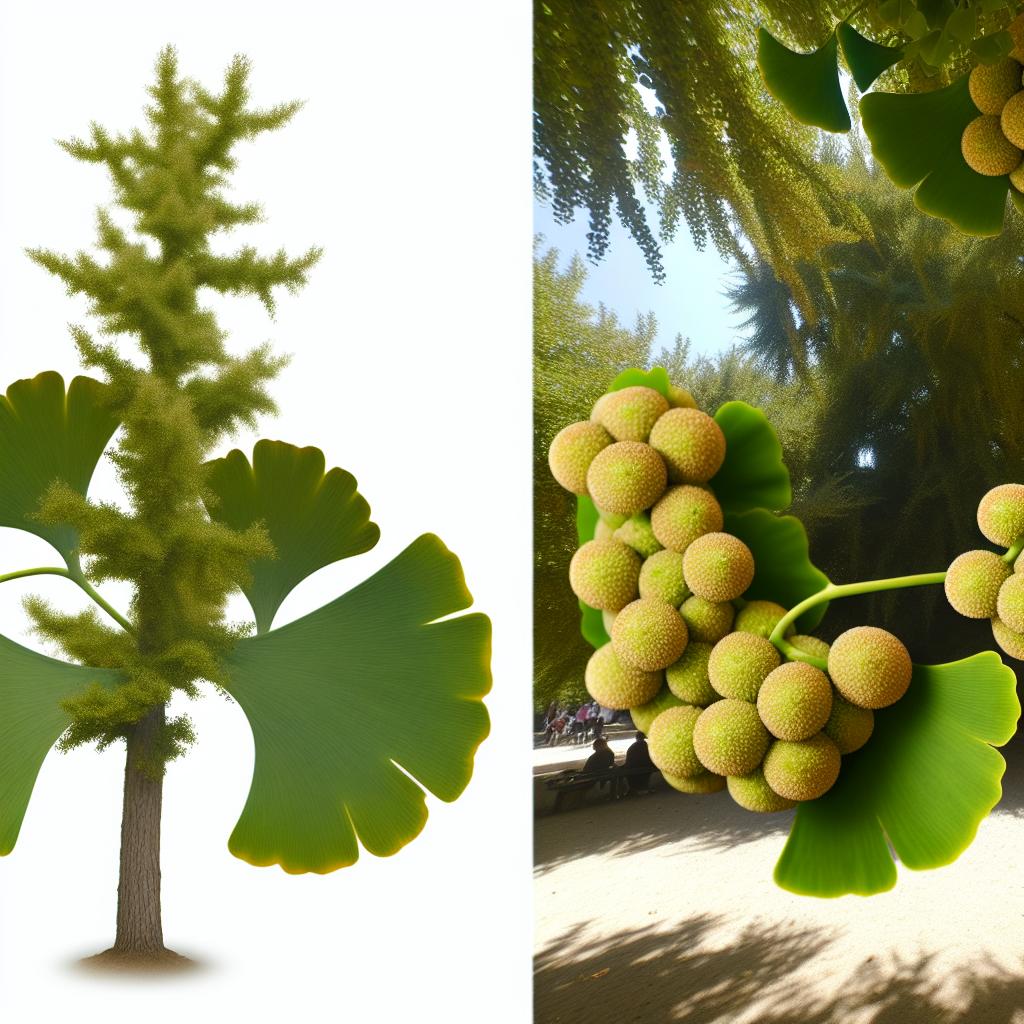Overview of Ginkgo biloba
The Ginkgo biloba tree holds a distinct place in the hierarchy of plant species, standing out not just for its historical endurance but also due to its unique botanical characteristics. Often described as a “living fossil,” it remains the sole survivor of an ancient group of trees that date back to prehistoric times, approximately 270 million years ago. This tree is revered for its distinct fan-shaped leaves, which turn a vibrant yellow in autumn, providing a spectacular display in temperate regions. Its remarkable ability to thrive in urban settings, despite pollution, makes it a popular choice for city landscaping. Historically, Ginkgo biloba is native to China, where it has been cultivated for thousands of years, appreciated both for its medicinal properties and its aesthetic appeal.
Male vs. Female Ginkgo Trees
One of the intriguing aspects of the ginkgo tree is its dioecious nature. This term refers to the presence of distinct male and female plants, with each tree exclusively producing either male or female reproductive structures. This separation of sexes is relatively uncommon among trees and presents unique challenges and opportunities for those cultivating or planting Ginkgo biloba.
Male Ginkgo Trees
Male ginkgo trees are characterized by their production of small, yellowish, catkin-like cones. These cones are responsible for releasing pollen during the springtime. Male trees are often favored in urban and suburban landscaping because they are non-fruiting, thereby avoiding the complications and maintenance issues associated with the fruits produced by female trees. The preference for male trees is particularly strong in city environments where the odor and mess created by fruit can be undesirable. This preference helps in urban planning by reducing the maintenance and cleanup associated with fallen fruits.
Female Ginkgo Trees
Female ginkgo trees, by contrast, bear ovules that, following pollination, develop into distinctive yellowish-orange fruits. Enclosed within the fruit is a seed, which is surrounded by a fleshy covering. While the nut inside is highly valued in various cultures and considered a delicacy, particularly in Asian cuisine, the outer fleshy part can emit a strong and unpleasant odor, often described as rancid butter. This characteristic makes female trees less popular in public planting schemes, where fallen fruit can create both a mess and a nuisance.
Reproductive Process
The reproductive process of Ginkgo biloba is a fascinating study in plant biology. Male trees produce pollen that must be transported to female trees, typically through the action of the wind, which carries the pollen to the female ovules. Upon successful pollination, fertilization occurs, leading to the formation of seeds. This wind-dependent process highlights the importance of spatial arrangement in planting, especially in controlled environments like botanical gardens or planned urban green spaces, where the balance of male and female trees needs to be carefully managed to achieve desired outcomes with regard to landscape aesthetics and maintenance.
Challenges in Identification
Distinguishing between male and female ginkgo trees can be challenging, especially before they reach reproductive maturity, which typically takes several years. Without visible reproductive structures, it is nearly impossible to determine the sex of young ginkgo trees purely through observation. To accurately identify the sex of a ginkgo tree prior to maturity, nursery labeling is often relied upon. Increasingly, genetic testing offers a modern approach to the definitive identification of tree gender, providing a scientific method to ascertain whether a ginkgo sapling is male or female. This information can be critical for both commercial operations and enthusiasts looking to cultivate these historic trees.
Conclusion
Understanding the difference between male and female ginkgo trees is more than a matter of botanical interest; it’s vital for urban planning and landscaping purposes. While the reproductive distinctions of the Ginkgo biloba tree offer fascinating insights into its biology and evolution, practical considerations, such as managing odor and maintenance in urban settings, frequently favor the planting of male trees. However, both types of trees contribute to the understanding and appreciation of this ancient species. For those curating landscapes or working in horticulture, awareness of ginkgo tree characteristics and reproduction is essential for informed decision-making. Further exploration of Ginkgo biloba’s resilience and uses can enhance this knowledge, providing insights into harnessing its full potential in various settings.

